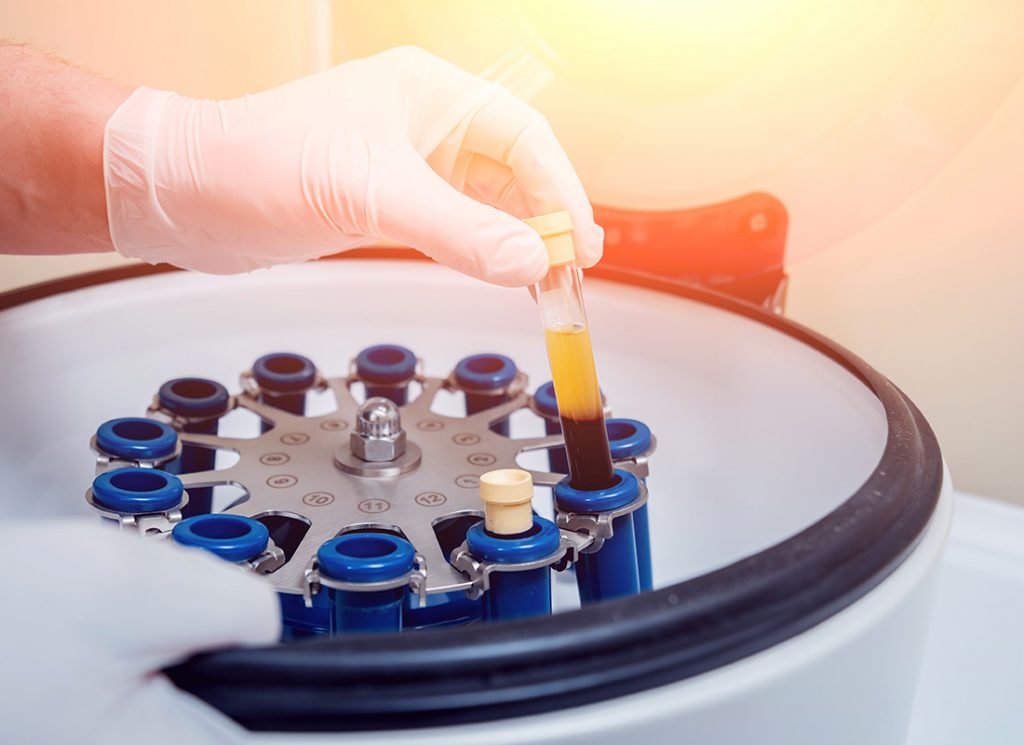
What is PRP?
PRP stands for Platelet Rich Plasma. A platelet is the smallest type of blood cell in your body, and is involved in tissue healing and blood clotting. PRP injection involves taking a sample of your own blood and spinning it down using a centrifuge to separate the components. This results in a layer of fluid called Plasma, which now contains a high concentrate of platelets and growth factors, hence the term Platelet Rich Plasma (PRP). PRP may now be injected into your body at an area where there is tissue damage in order to promote tissue healing and repair. This may be performed quickly and easily in the outpatient clinic, or in a surgical theatre.
How is PRP Used in Orthopaedic Surgery?
Tendon Healing
Tendons are rope like structures that connect muscle to bone, and allow transmission of forces to allow joint movement. Typically, tendons are hypovascular (have a poor blood supply) and when injured may be extremely painful and slow to heal. This condition may be called a tendinitis – acute inflammation and pain resulting from micro-tears that happen when the muscle and tendon is overloaded with a sudden and heavy force, or tendinosis – degeneration of the tendon in response to chronic overuse. Repetitive strain injury, with even tiny movements, such as clicking a mouse, can cause tendinosis. Both these tendon injuries may also be loosely described as a tendinopathy. The worst case scenario is when the tendon ruptures completely and requires surgical repair.
Many studies have suggested beneficial effects of PRP in healing tendon injuries. Specifically, growth factors in PRP may be of benefit in the healing of tendon injuries in conditions such as tennis elbow(lateral epicondylitis); patellar (kneecap) tendinopathy, achilles (heel) tendinopathy, and rotator cuff tears of the shoulder.
Osteoarthritis
Osteoarthritis is a common cause of pain, stiffness and disability in our joints, particularly the knees, hips, hands and spine. It occurs as a result of loss of cartilage – the protective material that coats the bones in our joints and allows a smooth gliding movement. Osteoarthritis can occur as a result of many different factors including aging, genetic factors, direct injury to the joint surface, and injury to structures such as the meniscus and ACL (anterior cruciate ligament).
PRP is a safe treatment with potential to provide symptomatic benefits for osteoarthritis at least in the short term (up to 12 months). Younger patients with less severe disease may be more responsive.Patients with knee osteoarthritis in particular may benefit from PRP injections.
What are the Benefits of PRP?
PRP comes from your own body so there is no chance of allergic reaction or side effects linked to drugs such as pain killers. Risk of side effects is low. It is simple, easy to prepare and may be performed in an outpatient clinic. It may also be used during conventional surgery e.g. tendon repair, to enhance soft tissue healing.







